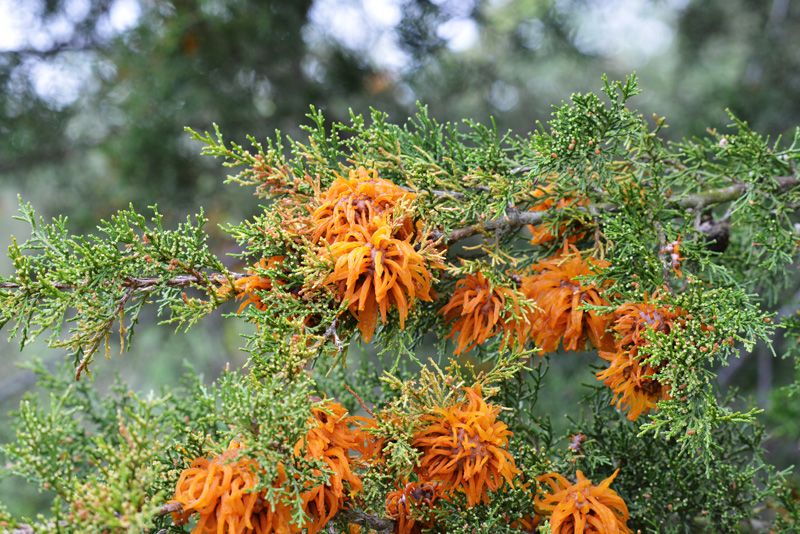
Cedar-apple Rust – Gymnosporangium juniperi-virginianae
Cedar apple rust
Common name
Cedar apple rust
Causal agent
It is a fungal disease caused by the fungus Gymnosporangium juniperi-virginianae. The fungus is heteroecious, which means it requires two hosts to complete its lifecycle. It uses the Cupressaceae family as its primary host, while the Rosaceae family serves as the secondary host.
Scientific name
Gymnosporangium juniperi-virginianae
Symptoms & Signs
Cedar apple rust symptoms vary with their host. It forms orange and red spots on the leaves of the Rosaceae family. The leaves also have small black spots on the upper surface. On the underside of the leaf spots, fungal tubes are present. The juniper trees have woody galls, witches brooms, and swollen stems, along with a sticky fungal ooze.
Transmission
It spreads through wind by means of spores. The spores can travel as far as 1 mile away and infect a species of the rosacea family to complete its lifecycle.
Time of concern
Early spring to late summer
Common hosts
Apples
Crabapples
Eastern red cedar
Hawthorn
juniper
